15 Best Interior Design Tips and Ideas
The fact that there are so many different interior decorating styles to experiment with is one of the best—and most enjoyable—aspects of interior design. You may incorporate a seemingly unlimited number of aesthetic interior designs into your house. There are so many interior design tips and ideas, in fact, you probably aren’t even aware of all of them. So I’m going to introduce you to all the different interior design trends today. And I’ll provide you with all the resources you need to apply these styles to your space.
Why is it beneficial to be familiar with all interior design trends?
I strongly believe that the finest interior design tips style is your own unique sense of taste. Regardless of how it connects with fashions and larger shifts in aesthetics. To establish a genuinely excellent and nuanced personal style, you need to be well-informed about all the many types that are out there.
Knowing all the many design philosophies available will offer you the tools you need to experiment successfully. Therefore, let’s begin. We’ll discuss 20 of the current most popular interior design trends in this article. I’ll offer you some information on their origins, appearance, and how to duplicate them.

Mid Century Modern

Scandinavian

Traditional

Minimalism

Transitional

Wabi Sabi

Southwestern

Art Deco

Art Nouveau

Modern Farmhouse

Industrial

Bohemian/Boho

Shabby Chic

Moroccan

Mediterranean
Mid-Century Modern Interior Design
From the middle of the 1940s through the late 1960s, the mid-century modern interior design trend emerged. Consequently, the name refers to the middle of the 20th century. As a result of the greater modernist movement, it expanded.
Lots of decoration was quite popular before this style became more widely used. MCM was a response to the excessive complexity. Instead, a simpler, more refined, and more fashionable look has become more mainstream. A certain aesthetic was greatly shaped by designers and architects like Le Corbusier and Charles and Ray Eames.
The Appearance of Mid-Century Modern
Low, horizontal, and asymmetrical are the general characteristics of this architectural and interior design aesthetic. Additionally, there are several wood embellishments visible. Particularly dark, lustrous wood. Natural materials like wood, however, are frequently combined with metals and man-made fabrics. During this period, patterns also gained a lot of popularity, with intriguing geometric designs gracing both walls and furniture.
Although color schemes varied significantly, warm hues like rust orange, brown, mustard yellow, and cream were by far the most popular. Then there may be some navy blue and olive green accents.
Scandinavian Interior Design
The popularity of Scandinavian interior design has been growing for a while and probably will for a long time. If you’ve looked through Ikea’s inventory, you’re already familiar with this design. Ikea is from Sweden, one of the Scandinavian nations, which explains why. Norway and Denmark are other nations in this category. The Scandinavian design is occasionally linked to Nordic nations including Finland, Iceland, and Greenland.
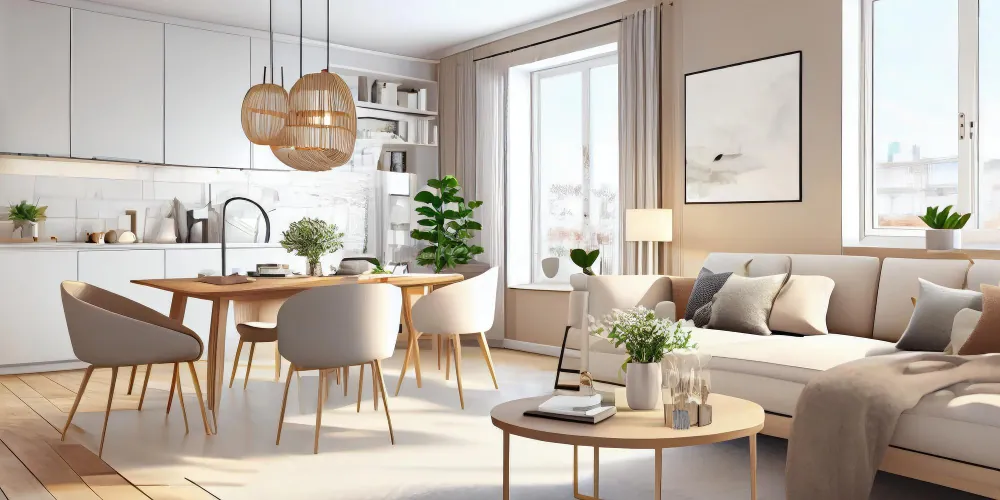
And this style is all about comfort and a return to nature. It was a reaction to the overly sleek style of modernism. So a natural remedy was to bring in more natural elements and warm, soft features. You may have heard of the word “hygge.” This Danish word means a cozy, content feeling, and it’s basically the mantra behind Scandi.
The Appearance of Scandinavian interior design
This design exudes a straightforward, minimalist atmosphere that is yet comfortable and natural. Although there is a strong emphasis on practicality and functionality, the aesthetic is always taken into account.
With light, neutral walls and light ashy wood accents, Scandinavian interiors are typically quite airy and bright. many plants minimal mess. Lots of comforting textures, such as thick knits and faux fur, and a color scheme that is neutral or light pastel. To having a good scandinavian interior design tips can improve your design concept more and more.
Traditional Interior Design
The origins of traditional interior design may be found in the popular design trends in Europe during the 18th and 19th centuries. The key components of this look are timeless elements, ease, and familiarity. Though it won’t always push the edge, traditional design is always in vogue.
When you see what I like to refer to as “movie homes,” you probably picture it. In particular, in movies from the late 1900s through the early 2000s. And the reason for it is that the suburbs saw this tendency explode.
Old European opulence has been repackaged in this style in a way that is approachable and not too ornate. In traditional interior design, comfort and functionality are given first priority.
Minimalism Interior Design
As the name suggests, minimalism is all about removing extraneous features and keeping only what is required. It is more about under-ornamentation than over-ornamentation. The adage “less is more” frequently appears while discussing minimalism or minimalist home design. People have been greatly motivated to consider if they truly need so much crap in their lives by individuals like Marie Kando. But this pattern predates her by a great deal. It started to take shape in the late 1950s.
What Minimalism Looks Like
It’s simple to believe that minimalism is more about the quantity of possessions in a home than the actual contents. And this is somewhat true because a big part of minimalism is reducing things to their bare minimum. That entails using wall art sparingly, staying away from trinkets, and possibly choosing not to use a rug. But there are also practical design components to take into account.
One aspect of minimalism is its emphasis on clear lines. You won’t find huge, ornate furnishings here; instead, the furniture has hard, angular edges. This highlights the components’ functionality and simplicity.
A monochromatic color scheme is another essential component of minimalism.
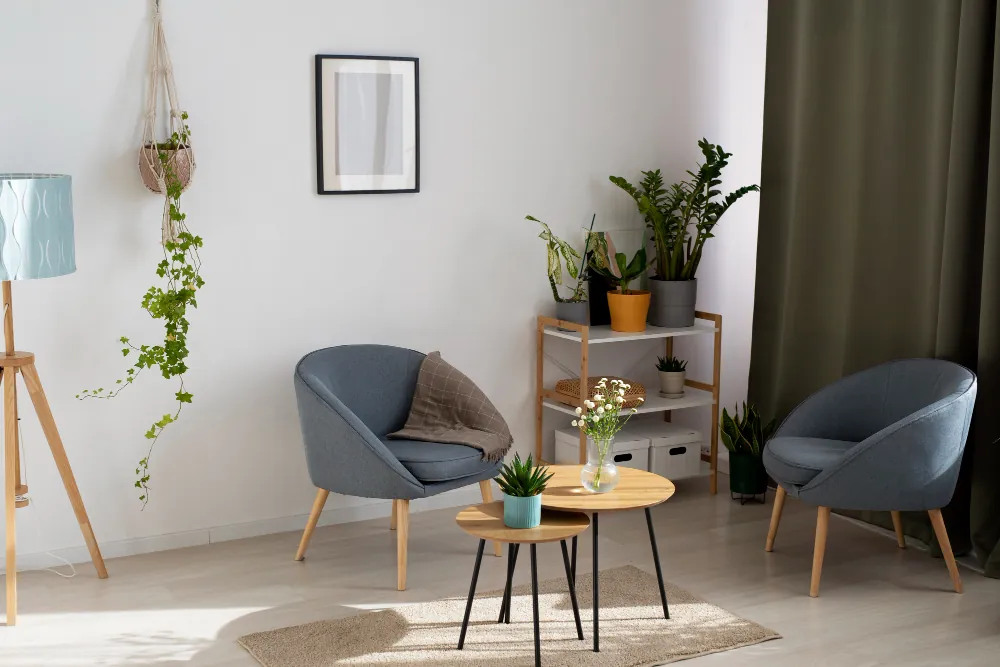
All other hues may be absent from a strictly minimalist environment, leaving just the primary neutral. However, color is still utilized extremely sparingly in less rigorously minimalist dwellings even when it is there.
Transitional Interior Design
Between modern and classic interior design styles is transitional interior design. This is the look for someone who desires the familiarity and comfort of classic interior design but would also like a bit more of a novel viewpoint.
What’s left is a classic look that speaks to both conventional and contemporary tastes.
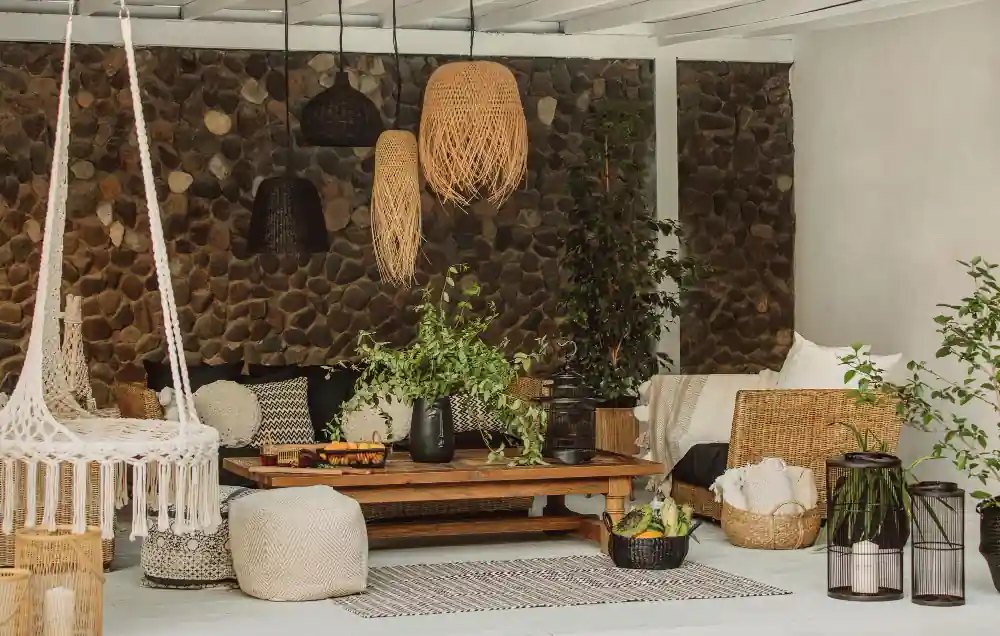
What Transitional Design Looks Like
There’s a fair possibility that every episode of every comedy you saw in the middle and late 2010s had a transitional living room. Transitional interior design still emphasizes big, filled, and ornate furniture items, just like traditional interior design. Many of the same architectural features, such as crown molding, will still be present. The same fabrics are also widely used.
However, you will see a lot more neutral colors in transitional design. Additionally, because gray is often associated with modernism, you could occasionally find that there are a lot more of them present.
Even while traditional and transitional furniture designs sometimes share commonalities, transitional furniture occasionally incorporates modern aspects. So perhaps anticipate seeing a few more minimalistic or diminutive elements incorporated within a traditionally styled item.
Wabi-Sabi Interior Design
Among all the current interior design trends, this one is among the most popular, and I support it. Wabi-sabi is a Japanese aesthetic that originated as a way of life. Wabi-sabi values emphasize genuineness, harmony with nature, and tolerance for flaws. Given how much your surroundings affect how you live your life, it was only natural for this to ultimately find its way into design.
Since wabi-sabi’s fundamental tenet is to accept elements that are particular to your life, its application will vary greatly from one created environment to another. These designs do have a few significant commonalities, though.
What Wabi-Sabi Interior Design Looks Like
Typical wabi sabi interior design is all about natural materials rather than manufactured materials. So expect to see a lot of wood, stone, and clay. Since some of the pillars of wabi sabi are authenticity and imperfection, you will see this reflected in the design. You may see cracks and scratches, asymmetry, rough edges, weathered materials, and lots of imperfect shapes. Texture is a very common byproduct of a lot of these imperfects. This is truly the driving force behind the style.
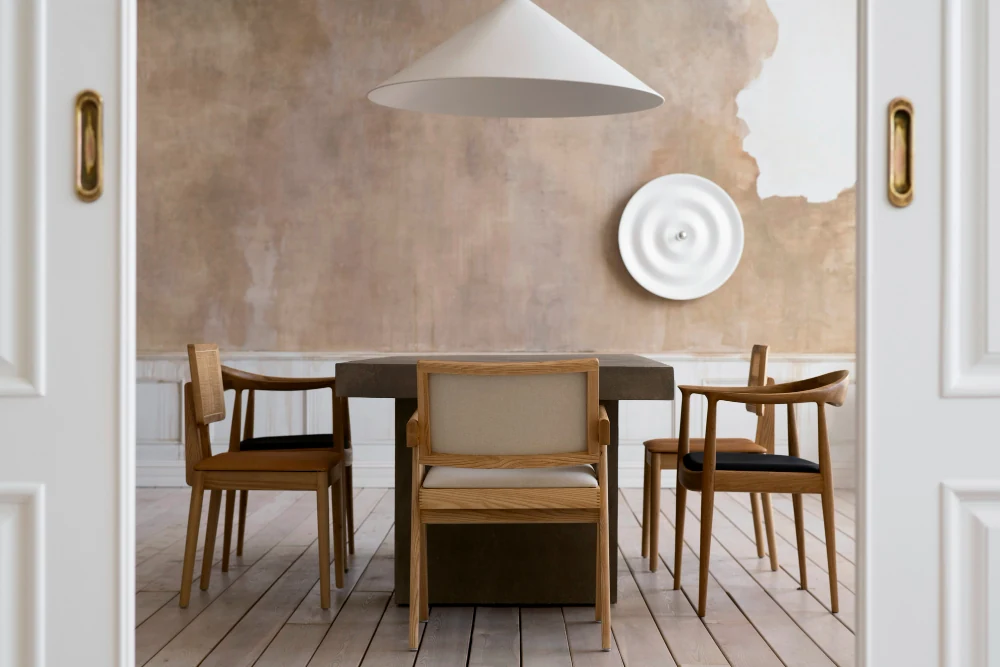
As fewer, more durable furniture items occupy the area, there will also be a lot of negative space in the design. Additionally, the furniture is often fairly low profile and tends to be more minimalist than too ornate. There are not many ornamental details, which contributes to the negative space sense. Additionally, when there are decorations, they are frequently practical. For example, consider ornamental bowls that also serve as key and wallet holders. Wabi sabi home design uses a fairly muted color scheme. It might not go well with this design if the hue is not one that is seen in nature.
Southwestern Interior Design
The Southwest region of the United States, including states like Arizona and New Mexico, is referred to as having Southwestern interior design. Both Native American and Spanish influences are quite strong here. In the 18th and 19th centuries, Spanish settlers and native inhabitants of the Southwest United States mixed to create this style.
What Southwestern Design Looks Like
The combination of the two aesthetics is incredibly intriguing. The colors and textures extremely prominently portray the desert environment of Arizona and New Mexico. This design frequently uses hues like oranges, browns, yellows, and teal accents. Numerous materials including clay, stone, and tile will also be shown.
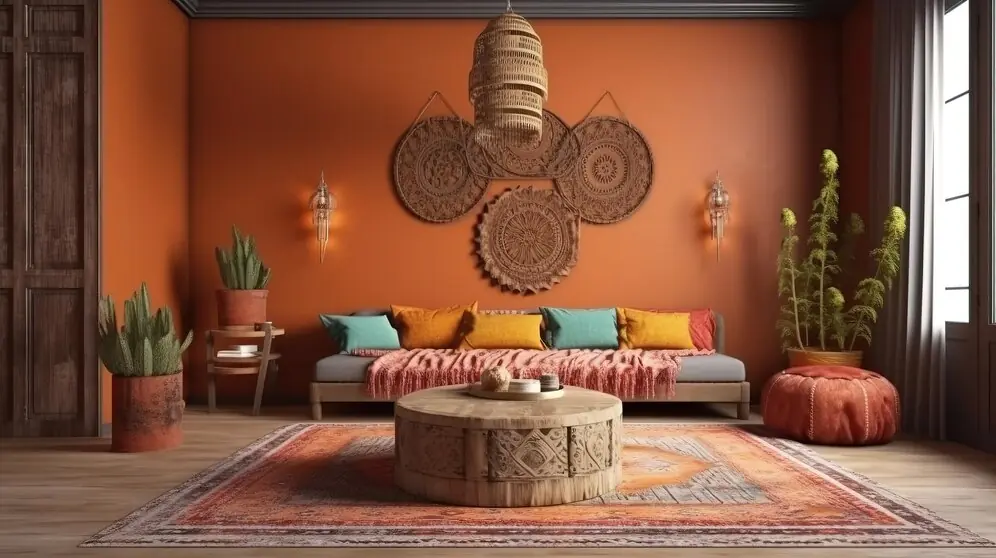
This complements the Spanish influence which is also evident quite well. Usually, you’ll see a lot of wood carvings and ironwork. But it’s probably the fabrics that will draw more attention. The distinctive Aztec-inspired designs in deep desert hues are frequently the focus of Southwestern interior design. Another common element is the stunning hand-painted Talavera tiles, which are ornamental and vividly colored tiles from Puebla, Mexico.
Art Deco Interior Design
When you think of the height of old Hollywood glitter, such as the Gatsby era, you’re probably picturing Art Deco interior design. This opulent, showy aesthetic is focused on geometric visual intrigue. It also happens to be one of my favorite home design styles. It just reminds me of a very chic bar.
Art Deco is a streamlined approach to geometric design that was prevalent in the 1920s and 1930s. Art Deco home design nowadays is trendy and whimsical while yet oozing with glitz. There are various nods to prior designs, yet they are done in a very modern and timeless manner.
What Art Deco interior design looks like
As previously said, geometry is very important in the Art Deco style. There will be a lot of line work in furniture and wall designs. There are also several curved embellishments, like circles and arches.
Mirrored accents, chrome and brass hardware, glass tabletops, and repetitive, geometric shapes are all popular in Art Deco design. One of the nicest aspects of the Art Deco style has to be the wallpaper. It definitely helps to distinguish this style from the rest of the interior design styles.
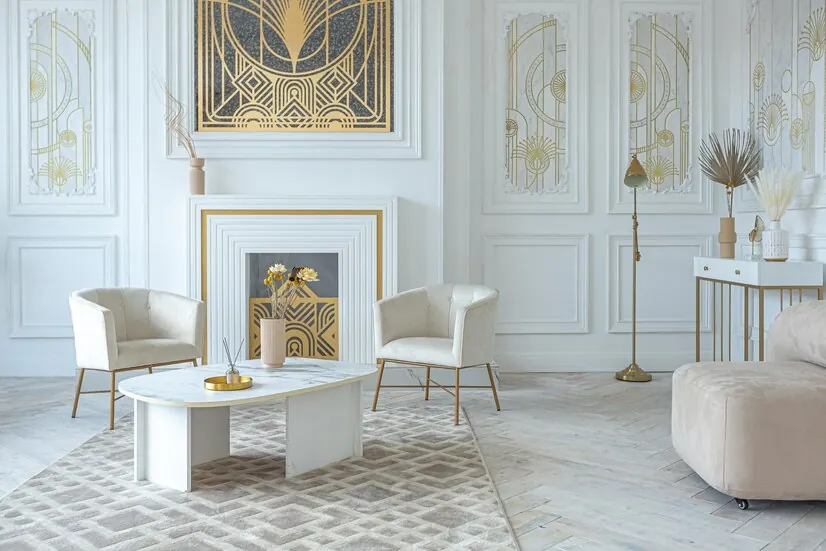
The bar cart is also a great addition to this design. The gilded, elegant bar carts that have grown so popular in recent years are frequently influenced by the Art Deco look.
Art Nouveau Interior Design
Art Nouveau was popular from the late 1890s until the mid-1910s. It is often regarded as the first modern style of the twentieth century. This is because it is the first style to draw influence from the current world rather than historical styles.
Because they are both quite theatrical – and share half of the same name – Art Nouveau and Art Deco are sometimes mistaken. However, these are two quite different styles.
Art Deco vs. Art Nouveau
In a nutshell, Art Nouveau is very ornamental, with plenty of curves, asymmetry, and adornment. Art Deco is more streamlined, linear, and symmetrical in appearance. So, while they are both styles that push the boundaries, they are completely different from one another.
What Art Nouveau looks like
As previously said, the Art Nouveau style features a lot of asymmetries and elaborate design. This is primarily due to the effect of nature on style. The design incorporates many natural elements. Whether it’s water-like waviness or climbing vines, floral themes, or exaggerated organic forms.
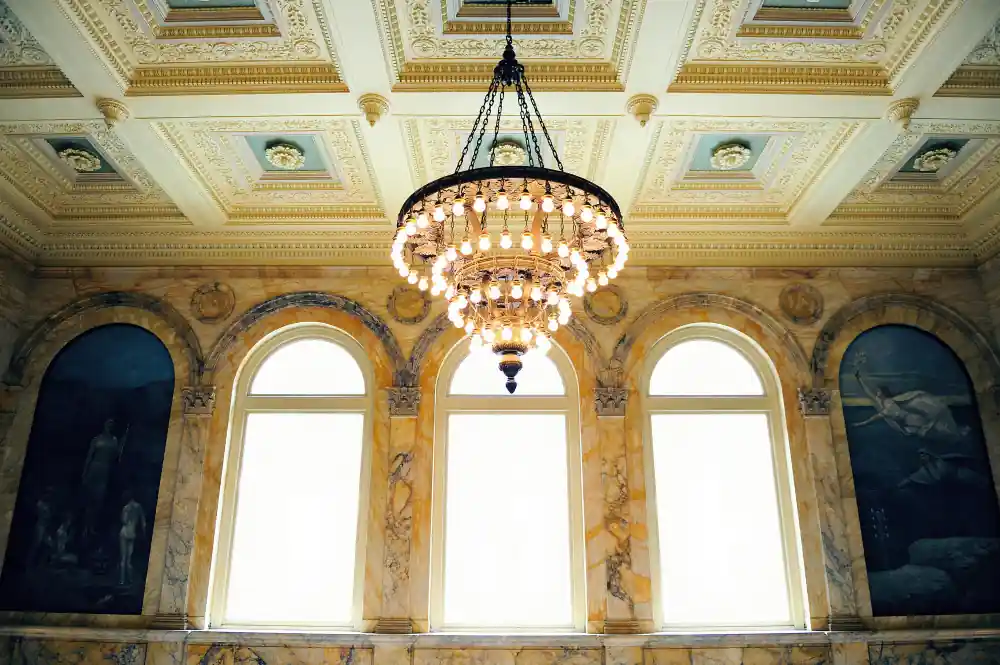
One of the best ways I can define Art Nouveau that makes sense is to compare it to the real-world design counterpart of Alice in Wonderland. Everything is fluid, dramatic, and on a grand scale, influenced by nature yet performed in a grandiose manner.
Modern Farmhouse Interior Design Tips
Modern Farmhouse has risen to prominence in the previous decade or so. This is primarily due to the popularity of interior design shows on networks such as HGTV. You’ve certainly seen shows like Fixer Upper, presented by Chip and Joanna Gaines, if you’re into interior design. The designs in this exhibition often lean primarily toward the Modern Farmhouse theme. The homey rustic atmosphere of the farmhouse is combined with modern, slightly minimalist features in this design style. This results in a home that seems quite modern while still retaining a lot of character and charm.
What modern farmhouse design looks like
Exposed wooden beams, ancient apothecary details, and, of course, barn doors are among the rustic accents that are more in keeping with the conventional farmhouse look. These rustic components will be combined with more modern elements such as black iron accents, shiplap, and wide plank flooring.
This style’s furniture is a fairly balanced mix of old and more streamlined, contemporary items.
The open floor layout is a key contemporary feature of most modern farmhouse homes. This is a significant departure from the strongly segregated atmosphere of conventional country home rooms. Furthermore, open shelving is a modern farmhouse feature that gives it a very contemporary air. The color palette is primarily neutral, with a focus on brilliant whites, warm wood tones, and black.
Industrial Interior Design
When you think of loft rooms with exposed brick, you probably think of an industrial interior design. Or cool rooms that were originally manufacturing factories. It gained its name from the reclaimed mood of industrial style – it’s completely inspired by leveraging the character and texture of old, industrial places.
It’s also popular in both the home and the office design. Work/live spaces are widespread in the industrial style, which is especially popular in the creative community.
what industrial interior design looks like
Exposed brick walls are the most typical characteristic of industrial interior design. This is primarily due to the style’s primary influence being old industrial buildings. However, brick components are frequently used in modern construction to add to the industrial feel. Other elements derived from its manufacturing origins are exceptionally high ceilings and floor-to-ceiling windows. If they’re factory windows, you get extra points.
There is also a lot of concrete or heavily aged wood flooring. As well as exposed structural beams and air ducts or other piping. Materials are also important in establishing the industrial interior design style. In addition to a lot of wood, you’ll see a lot of metals like steel and iron. Glass is also a popular accent, as shown in the popular trend of exposed Edison bulbs. Worn leather is an industrial standard when it comes to soft materials.
Bohemian or Boho Interior Design
The Bohemian style is a real Pinterest mainstay across all home design types. While some may refer to the bohemian or boho interior design style as one for “hippies,” it is just an acceptance of many cultures at its foundation.
However, this diverse aesthetic shares many principles with the counterculture. It’s all about freedom, free expression, and unusual beauty. The bohemian look is almost purposely sloppy. Boho design is heavily influenced by Indian, Asian, African, and Middle Eastern cultures.
What Bohemian looks like
Natural maximalism is the best way to characterize the bohemian style. There will be a lot of vivid color accents, particularly reds, purples, and yellows. The layering of diverse materials and striking patterns in pieces such as carpets, cushions, and artwork is also prevalent. This layering gives it the effortlessly lovely aesthetic that is the style’s main purpose.
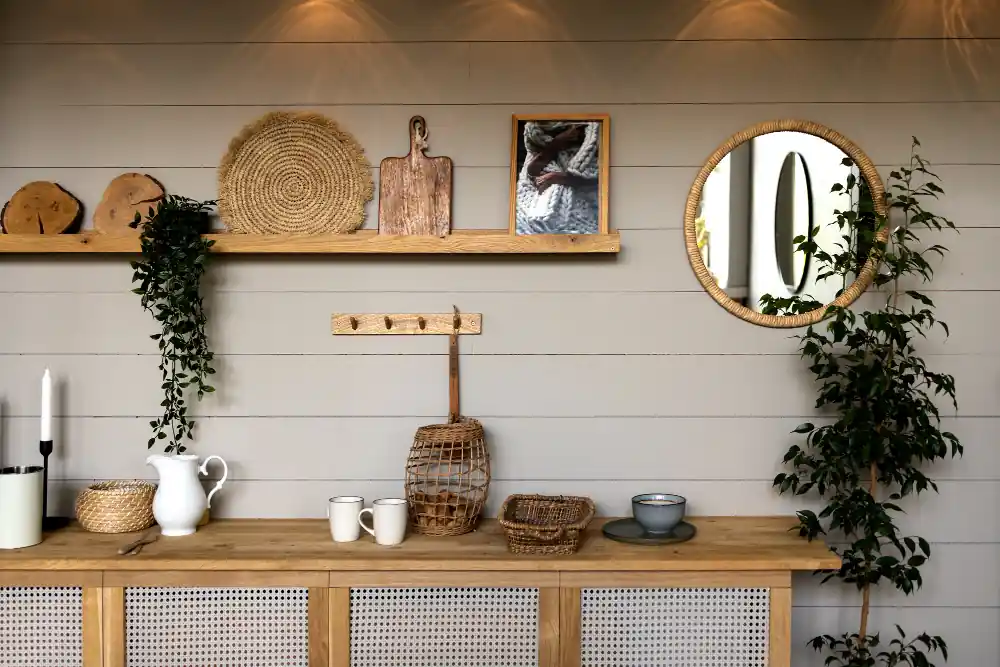
Natural elements abound in boho, whether it’s home plants, timber accents, rattan furniture, or clay items.
Crochet, macrame, and fringe details add to the handcrafted, one-of-a-kind feel.
Shabby Chic Interior Design
To be honest, this is not my favorite interior design style. Nonetheless, it has a place in design. (Don’t be furious with me, Mom, for criticizing) Shabby chic is a highly feminine spin on the vintage look. It has the beauty of vintage items, but with a focus on soft and delicate details.
This is likely the most popular style among Gen X women, and it is essentially what Modern Farmhouse is to older Millennial women. In many ways, Shabby Chic foreshadowed Modern Farmhouse.
What Shabby Chic looks like
There are many delicate materials in a shabby chic home, such as lace and linen. These textiles are frequently whites, creams, and pastels. Floral details, with their very feminine connotations, are also quite frequent in shabby chic textiles.
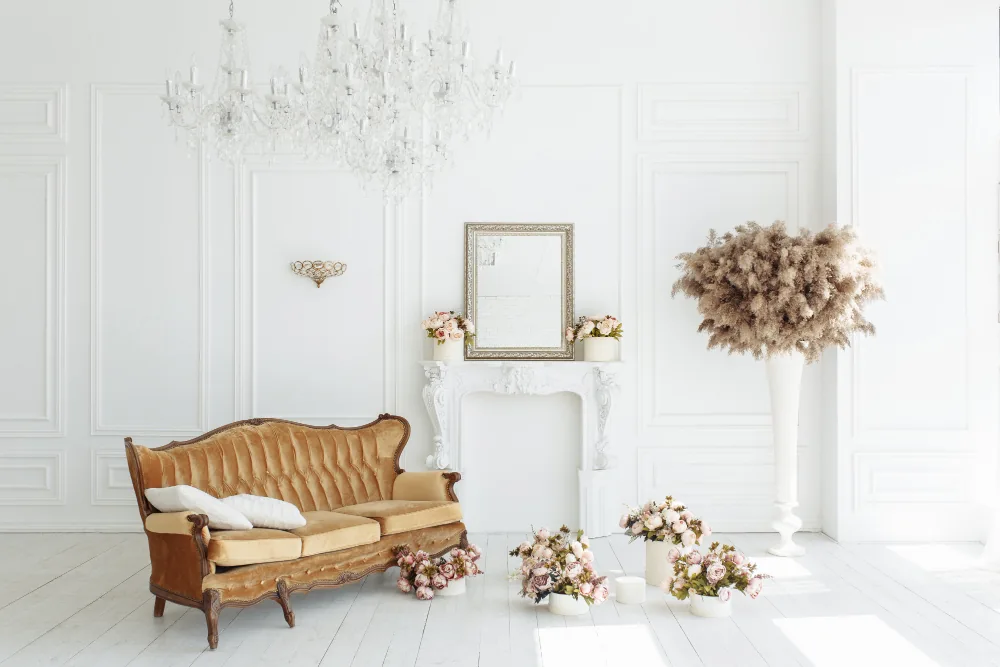
The worn appearance is a key component of this design. This is where the craze for aging furniture by unevenly sanding it and finishing it with chalk paint took off. So, even if shabby chic enthusiasts do not come across the right vintage piece, they frequently discover an artificially aged piece or age it themselves. This is why shabby chic is so popular among DIYers.
There are many parallels between shabby chic and classic furniture styles. Both contain an abundance of beautiful, solid furniture. However, shabby chic furniture is often white or light-colored worn wood, whereas conventional furniture is typically polished, dark wood.
Moroccan Interior Design
The name suggests that this style is influenced by the culture of Morocco, a North African country. However, Morocco’s unusual location on the border of Africa and Europe, results in a highly intriguing combination of diverse civilizations’ aesthetic identities. In my view, it’s one of the most aesthetically appealing home design types.
Because of its geographical location, the Moroccan style incorporates elements of French, Portuguese, and Spanish aesthetics from the northwest, as well as the Mediterranean, African, Persian, and Islamic aesthetics from the south and east. You end up with a really remarkable and beautiful cultural melting pot.
To me, the whole mood is one of sumptuous, rich ease.
What Moroccan interior design looks like
The elaborate, repeating patterns are the most distinctive and iconic feature of Moroccan design. These designs may appear in carvings, hand-painted tiles, or fabrics. Moroccan carpets are one of the most popular examples of this in modern homes. (This is frequently where the Boho and Moroccan styles collide.)
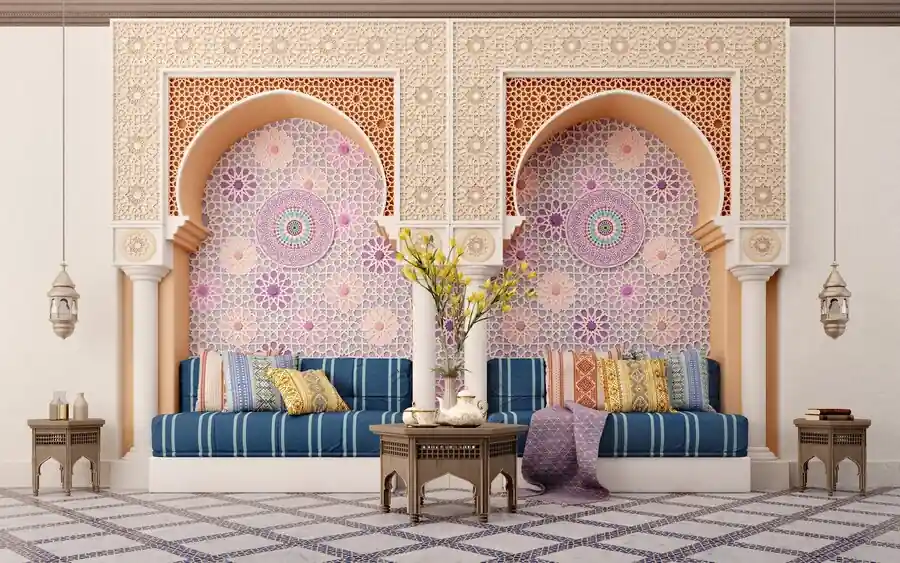
However, Moroccan is more than just the patterns. Other components include:
- Architecture with arches
- Lots of vibrant jewel tones
- Canopies draped
- Furniture with intricate scrollwork, mosaics with tile and mother of pearl, and wood carvings
- Glass lamps with different colors
- Many mirrors, particularly large ones
Mediterranean Interior Design
Mediterranean interior design is light and airy, reflecting the maritime nature of the nations that define it. These are the nations north of the Mediterranean Sea: Spain, Greece, and Italy.
This design has an easygoing feel to it, without compromising chicness.
What Mediterranean interior design looks like
Because of the coastal influence, Mediterranean houses have a lot of this beach atmosphere. For one thing, outside-inside living arrangements are quite prevalent, whether they are mimicked with huge windows and the use of the same materials both inside and outside, or they are a true opening up of the interior to the outside, particularly with outdoor eating and living rooms.
The color scheme reflects the seashore vibe. A Mediterranean color palette is built on blues, whites, and other gentle, bright neutrals. The Mediterranean has a really light and airy vibe about it. Obviously, some fantastic natural light is required.
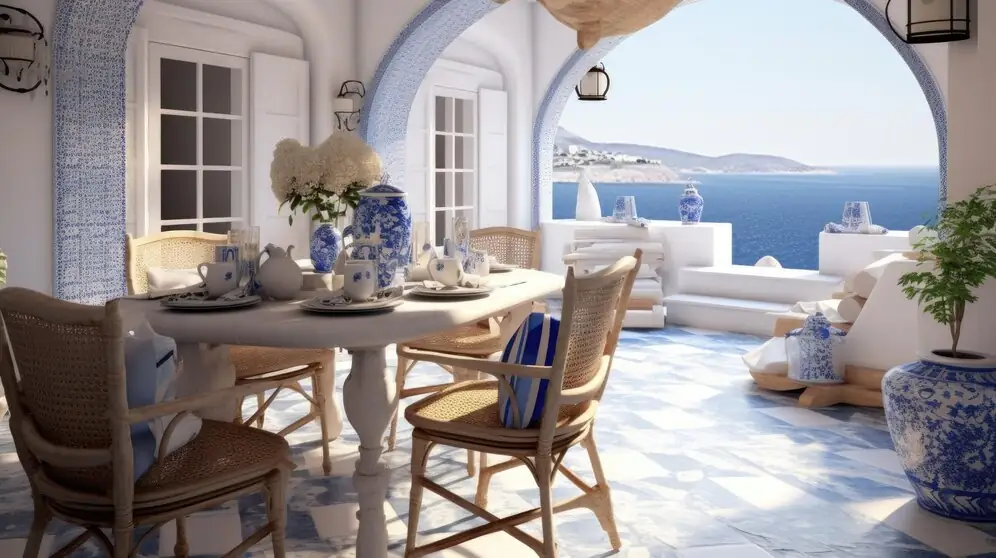
There are also a number of natural materials, such as wood, stone, rattan, and clay. When you break out which nations provided which elements, things get extremely fascinating. The red-tiled rooftops, for example, are inspired by Italian style, while the whitewashed walls and roofs are inspired by Greek design and the wrought-iron features come from Spain. They all work together to create a unified coastal design.
Transform your living space into a personalized haven with OutBuild’s expert interior design services. From conceptualization to stunning execution, let’s create a home that mirrors your unique style. Contact us today to start your design journey!


